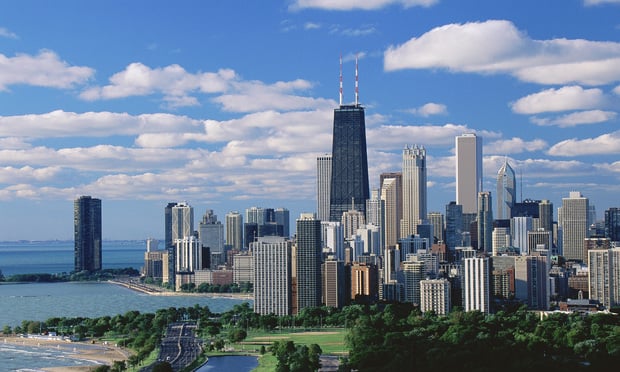CHICAGO—One week before AT&T decided to move an additional 500 jobs from the suburbs to the CBD, the Chicago office of Colliers International published its study on the CBD's office market for the second quarter. The researchers found that while the CBD had experienced a modest improvement, the outlook for long-term growth was even more encouraging, and a key explanation was the migration of high-tech jobs, similar to those provided by AT&T, into the downtown as companies hunt for employees who want an urban lifestyle.
Furthermore, the CBD has a “growing reputation as a new launching pad for technology start-ups,” Colliers notes. The newcomers “are gaining footing in the CBD through support provided by incubators that offer resources and physical space until the companies are able to graduate to their own location.”
However, even though the CBD has a healthy long-term outlook, the slow recovery remains threatened by the corporate trend to “right-size” their offices and increase efficiency. “Historically, law firms and professional services firms have been major drivers of demand in the Chicago CBD,” the researchers say. But “since the economic downturn, they have cut their space requirements by moving towards more open layouts and using cloud-based technology to reduce their real estate costs.” As a result, the hiring that does take place due to an improving job market might not cause office expansion.
Another burden is that many larger tenants have already renegotiated lease commitments, ensuring that small and mid-sized users will drive much of the upcoming leasing activity. Over the second quarter, leasing activity did pick up, Colliers finds, with the completion of five leases for more than 100,000-square-feet. McDermott Will & Emery scored the largest lease of the quarter by signing for 225,000-square-feet at the future 444 W. Lake St. And Google's 200,000-square-foot lease in the West Loop at 1000 W. Fulton St. was the second largest.
The second quarter saw 306,174-square-feet of positive net absorption in the CBD, bringing the total for the first half of the year up to 441,170-square-feet. Class A space fared particularly well, with 222,420-square-feet in the first quarter and a year-to-date total of 564,419. In contrast, there was a total of negative 259,157-square-feet in class B spaces so far. And overall, the vacancy rate for the CBD only declined slightly to 13.8%, down from 14% after the first quarter.
Colliers believes that this modest decrease in vacancy may get repeated in upcoming quarters. “The result of all these trends combined is a more systematic and unhurried improvement in market fundamentals, as reflected by a vacancy rate that continues to descend but in small increments on a quarterly basis.”
Want to continue reading?
Become a Free ALM Digital Reader.
Once you are an ALM Digital Member, you’ll receive:
- Breaking commercial real estate news and analysis, on-site and via our newsletters and custom alerts
- Educational webcasts, white papers, and ebooks from industry thought leaders
- Critical coverage of the property casualty insurance and financial advisory markets on our other ALM sites, PropertyCasualty360 and ThinkAdvisor
Already have an account? Sign In Now
*May exclude premium content© 2025 ALM Global, LLC, All Rights Reserved. Request academic re-use from www.copyright.com. All other uses, submit a request to [email protected]. For more information visit Asset & Logo Licensing.








